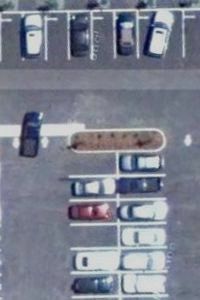
© The Associated Press / Stefano MediciAmanda Knox, second from left, walks past her lawyer Luciano Ghirga, as she arrives in court for the appeal trial in Perugia, Italy, Saturday, June 18, 2011. Knox was convicted of murdering her British roommate in Perugia, Meredith Kercher, and sentenced to 26 years in prison. Her co-defendant and ex-boyfriend Raffaele Sollecito was also convicted and sentenced to 25 years. They both deny wrongdoing and have appealed the 2009 verdict.
A convicted child murderer testified Saturday at the appeals trial of Amanda Knox, saying that a fellow inmate had told him the American student had nothing to do with the killing of her roommate in Italy.
Mario Alessi, who is serving a life sentence for one of Italy's most shocking crimes, the kidnap-murder of an Italian toddler snatched from his home, was called by defence lawyers as a witness.
He was one of five witnesses heard Saturday, also including a police informant who testified from behind a cover and a Neapolitan mobster with a flamboyant attitude.
Knox was convicted of sexually assaulting and murdering British student Meredith Kercher in the house the two shared in Perugia, and sentenced to 26 years in prison. Her co-defendant and ex-boyfriend, Raffaele Sollecito of Italy, was also convicted and sentenced to 25 years. Knox and Sollecito, who both attended Saturday's session, deny wrongdoing and are appealing their convictions.
Rudy Hermann Guede, an Ivorian, was convicted in a separate proceeding. His conviction has been confirmed by Italy's highest criminal court. Guede also denies wrongdoing, but admitted being in Knox's and Kercher's apartment the night of the murder on Nov. 1, 2007.
Alessi is being held in the same prison as Guede. He testified that the Ivorian told him that Knox and Sollecito are innocent, speaking in prison conversations in November 2009. That was about a month before Knox and Sollecito were convicted in the first trial and while Guede had already been convicted and was appealing.










